Sunchang travel - South Korea, Asia
Sunchang County is located in North Jeolla Province, South Korea, and is known for its picturesque mountainous terrain and rich cultural heritage. Sunchang is particularly famous for its traditional red pepper paste, known as gochujang, which is considered a local specialty and is distinct from other varieties due to its unique recipe and the governor's personal seal of approval. The county also hosts the Sunchang Fermented Soybean Product Festival, celebrating its reputation as a center for traditional Korean fermented foods. These characteristics make Sunchang a unique and attractive destination for visitors interested in Korean cuisine and culture.
Seeking a tailored South Korea adventure? Explore our premium Japan tour offerings here.
Population: Approximately 30.000 people.
Economy: Sunchang County's economy deeply rooted in its agricultural and culinary heritage, particularly known for its production of traditional Korean fermented foods. The county is famous for its gochujang (red pepper paste), which is crafted using high-quality local ingredients such as peppers and beans, benefiting from the region's ideal climate and clean water sources. This specialty has not only become synonymous with Sunchang but also drives significant tourism, especially during the annual Sunchang Fermented Soybean Product Festival, which celebrates the county's status as a center for fermented food production.
Attractions: Sunchang Traditional Gochujang Folk Village, Sunchang Jangnyu Experience Center, Sunchang Fermented Soybean Product Festival, Sunchang Gochujang Museum, Gangcheon Mountain, Hoemun Mountain
South Korea
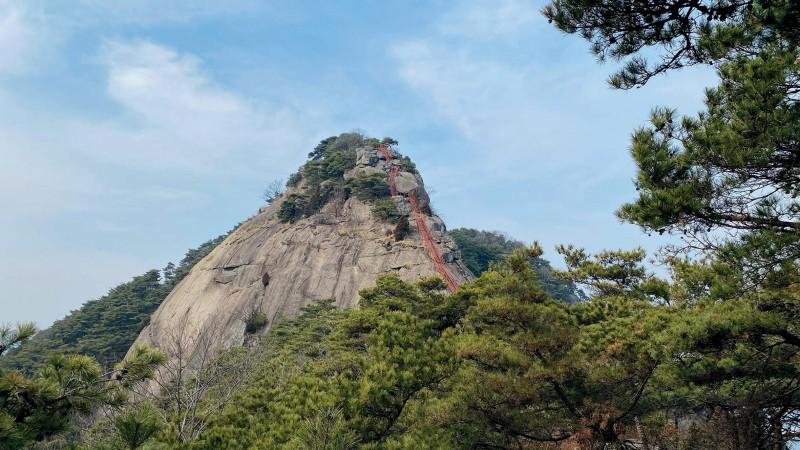
Overview of Sunchang
History & Cultural Influence
Historically, Sunchang was known as 'Okcheon' and 'Osan' during the Mahan Period, and later as 'Sunhwa' during the Unified Silla Period, before becoming 'Sunchang-hyeon' in the Goryeo Period. It gained prominence when the Buddhist monk Jeongo, a native of the area, was honored as the Monk of the State in 1319, leading to its elevation to a county status.
Culturally, Sunchang is synonymous with its famous gochujang (red pepper paste), which has been a regional specialty since the 14th century. The county's gochujang became renowned after King Taejo of the Joseon Dynasty incorporated it into royal cuisine. This culinary tradition has not only defined Sunchang's cultural identity but also contributed to its economy and tourism, with the Sunchang Fermented Soybean Product Festival celebrating its rich heritage in fermented foods.
Interaction with The Locals
Visitors to Sunchang can expect warm and friendly interactions with the locals, who are known for their hospitality and pride in their cultural heritage. Predominantly ethnic Korean, with a strong sense of community and tradition. The locals are generally welcoming towards tourists, especially those interested in experiencing Sunchang's famous gochujang (red pepper paste) and other traditional fermented foods. Visitors can enjoy engaging with residents during local festivals and at cultural sites, where they can learn about the region's culinary and historical significance.
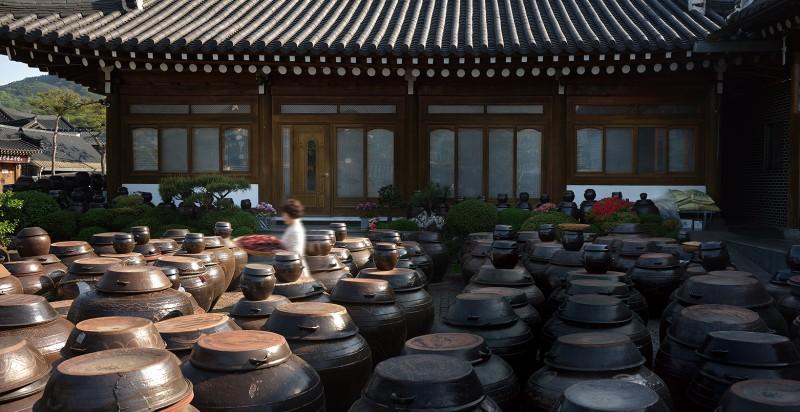
Sunchang Gochujang Folk Village - © gather
Top attractions in Sunchang
Sunchang is renowned for its rich cultural heritage and stunning natural beauty. Among its top attractions are the famed Sunchang Gochujang Village, where visitors can explore the traditional process of making Korea's iconic red chili paste, and the serene Mount Deokyusan, offering breathtaking views and peaceful hiking trails.
Sunchang Traditional Gochujang Folk Village
Location: At the foot of Mt. Amisan in Sunchang City, Jeollabuk-do.
The village is renowned not only for its production of traditional gochujang but also for its picturesque setting at the base of Mt. Amisan. Visitors can explore traditional Korean houses, known as hanok, which are used in the production process. The village hosts annual festivals celebrating gochujang, where visitors can taste various dishes made with the paste and learn about its role in Korean culinary history. Additionally, the village showcases traditional fermentation jars (onggi) used for making gochujang, adding a unique cultural element to the visit.
Sunchang Jangnyu Experience Center
Location: Near the Traditional Gochujang Folk Village in Sunchang, Jeollabuk-do.
The center offers a variety of hands-on programs where visitors can make their own gochujang, doenjang (soybean paste), and other traditional Korean condiments. The experience is guided by local experts who teach the traditional techniques passed down through generations. The center also provides insight into the health benefits of fermented foods and their significance in Korean diets. Seasonal workshops and special events are frequently held, allowing visitors to create traditional dishes like bibimbap using the condiments they've made.
Gangcheonsan County Park
Location: 270 Gangcheonsan-gil, Paldeok-myeon, Sunchang, Jeollabuk-do.
Gangcheonsan County Park is famous for its diverse natural beauty, including dense forests, towering rock formations, and serene waterfalls such as the Jangsu Waterfall. The park is particularly popular in autumn when the leaves turn vibrant shades of red and orange, attracting photographers and hikers. The park's suspension bridge offers breathtaking views of the valley below, and the hiking trails vary in difficulty, making it accessible for all levels of outdoor enthusiasts. Historical sites within the park, such as old temples and pagodas, add cultural depth to the visit.
Sunchang Fermentation Theme Park
Location: 55 Jangryu-ro, Sunchang-eup, Sunchang-gun, Jeollabuk-do.
The park is an educational and cultural hub that delves into the science and art of fermentation, which is integral to Korean cuisine. It features interactive exhibits that explain the fermentation process of various foods, including gochujang, doenjang, and kimchi. Visitors can explore the "Fermentation Science Hall," which provides a detailed look at the microbiology behind fermentation. The park also hosts cooking classes where participants can learn to prepare fermented dishes. The park's outdoor areas include a beautifully landscaped garden with examples of traditional Korean storage jars (onggi) used for fermenting food.
Ami-san Mountain
Location: In the county of Hongcheon, Gangwon-do.
Ami-san Mountain is a destination known for its natural beauty and recreational activities. The mountain is covered with dense forests that are ideal for hiking, with trails leading to scenic viewpoints overlooking the surrounding valleys and rivers. In the spring, the mountain is dotted with colorful wildflowers, and in the winter, it becomes a popular spot for snowshoeing. The mountain is also home to several Buddhist temples that provide a peaceful retreat for visitors. Historical relics and cultural sites along the trails offer a glimpse into the region's past, making Ami-san a well-rounded destination for both nature lovers and history enthusiasts.
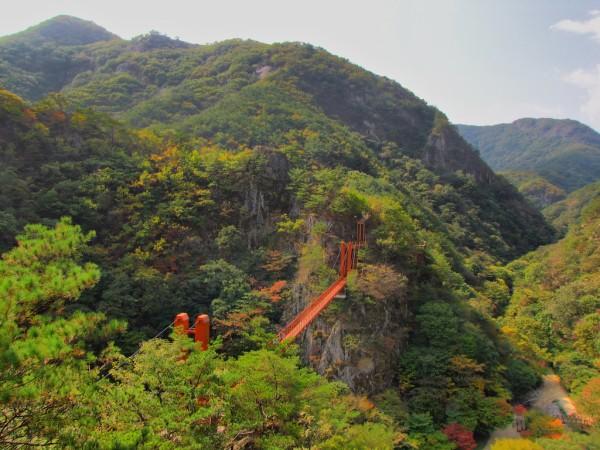
Gangcheonsan County Park - © gather
Must-Try Dishes in Sunchang
Sunchang County is renowned for its culinary specialties, particularly its traditional fermented foods. Here are some must-try dishes and local specialties:
Sunchang Gochujang (Red Pepper Paste)
This famous red pepper paste is a staple of Korean cuisine, known for its rich flavor and high quality. Sunchang gochujang is made using traditional methods and is often used in various Korean dishes to add spice and depth. The paste is so integral to Sunchang's identity that it is celebrated annually at the Sunchang Fermented Soybean Product Festival, highlighting its importance to the local culture and economy.
Doenjang (Soybean Paste)
Another fermented product, doenjang is a thick soybean paste used in soups and stews, known for its deep umami flavor and nutritional benefits. Like gochujang, doenjang is a key component of Korean cuisine and is celebrated in Sunchang for its traditional production methods.
Cheonggukjang (Rich Soybean Paste Stew)
A fermented soybean paste stew that is rich in flavor and often includes tofu, vegetables, and sometimes meat. It is known for its strong aroma and health benefits. This dish is a staple in Korean households and is appreciated for its probiotic content and heartiness.
Jangajji (Pickled Vegetables)
Vegetables pickled in gochujang or soy sauce, offering a tangy and savory flavor. These pickles are commonly served as side dishes in Korean meals. Jangajji showcases the versatility of Sunchang's fermented products and complements the main dishes with its refreshing taste.
Intrigued by Danyang? See why it’s a favorite among visitors, and start planning your trip here with our exclusive guide.
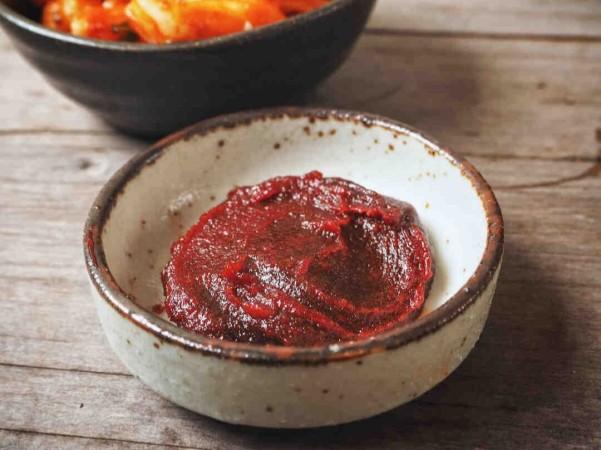
Sunchang Gochujang (Red Pepper Paste) - © gather
Weather in Sunchang: Best Time to Visit
Sunchang County experiences a temperate climate with distinct seasonal variations, which can help travelers plan their visit and pack accordingly:
Average Temperatures
Winter (December to February): The daily mean temperature ranges from −1.5°C (29.3°F) in January to 1.4°C (34.5°F) in February, with record lows reaching below freezing.
Spring (March to May): Temperatures rise from 6.3°C (43.3°F) in March to 18.1°C (64.6°F) in May, making it a pleasant time to visit.
Summer (June to August): The warmest months, with daily means around 22.4°C (72.3°F) in June to 26.0°C (78.8°F) in August, and record highs reaching up to 38.1°C (100.6°F).
Autumn (September to November): Cooler temperatures return, ranging from 20.8°C (69.4°F) in September to 7.6°C (45.7°F) in November.
Rainfall and Humidity
Rainfall: The region experiences significant rainfall during the summer months, with July being particularly wet. Travelers should be prepared for humid conditions during this time.
Humidity: Average relative humidity is highest in July and August, around 79.5%, contributing to the muggy summer feel.
Best Time to Travel
Spring (April to June) and Autumn (September to November) are considered the best times to visit Sunchang, offering mild temperatures and less rainfall, ideal for outdoor activities and exploring local attractions.
Want to know what makes Goseong unique? Look no further—find everything you need here in our travel insights.
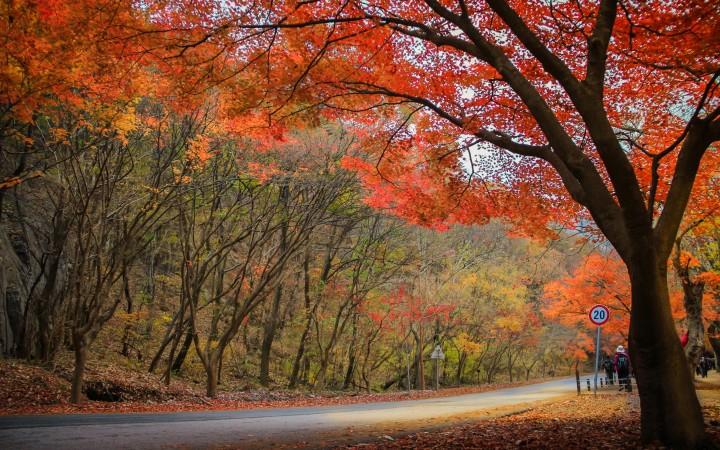
Sunchang in fall - © gather
Festivals & Local Celebrations
Sunchang County hosts several vibrant festivals that celebrate its rich cultural and culinary heritage:
Sunchang Fermented Food Festival
Time of Year: October
This festival is a celebration of Sunchang's renowned fermented foods, particularly gochujang (red chili paste). Visitors can engage in hands-on activities like making gochujang, enjoy cultural performances, and explore exhibitions showcasing traditional Korean condiments. The event is held in Sunchang Gochujang Village and offers a unique insight into the region's culinary traditions.
Sunchang International Fermented Sauce Expo
Time of Year: Concurrent with the Fermented Food Festival in October
This expo highlights global fermented sauces and invites chefs to present lectures and cooking demonstrations. Visitors can taste traditional Korean sauces and international varieties, participate in a cooking contest, and explore a Street Food Zone, making it a fascinating experience for food enthusiasts.
Gangcheonsan County Park Night Light Show
Time of Year: Various times, often during festival seasons
This attraction offers visitors the chance to explore Gangcheonsan County Park at night, enjoying colorful light displays near Cheonu Falls and other scenic spots. The show features fairy-tale characters and stories from the Joseon Dynasty, providing a magical experience for families and nature lovers.
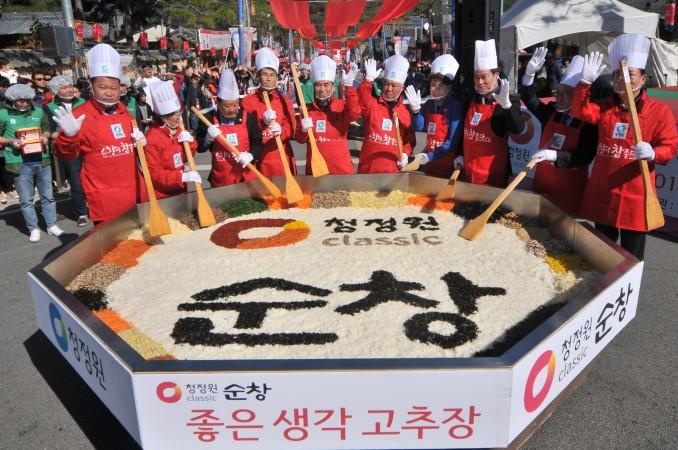
Sunchang Fermented Food Festival - © gather
Culture Etiquette in Sunchang
When visiting Sunchang, it's essential to be aware of the local customs and cultural etiquette to ensure respectful interactions with residents. Here are some important points:
- Greetings: Bowing is a common form of greeting in Korea, with the depth of the bow indicating the level of respect. A slight bow is typically sufficient for casual encounters, while a deeper bow is appropriate for more formal situations or when greeting elders.
- Dining Etiquette: When dining, wait for the eldest person at the table to start eating before you begin. It is polite to express gratitude before and after meals by saying "잘 먹겠습니다" (I will eat well) and "잘 먹었습니다" (I ate well). Additionally, use both hands when passing food or drinks to show respect.
- Gift-Giving: If you are invited to someone's home, bringing a small gift is customary. Use both hands to present or receive gifts, and avoid giving items like white flowers or gifts written in red ink, as these are associated with funerals and carry negative connotations.
- Personal Space and Physical Contact: Koreans value personal space, and excessive physical contact, especially between genders, may be uncomfortable. Public displays of affection are generally frowned upon, so it's best to keep interactions respectful and reserved.
- Removing Shoes: When entering a Korean home, it is customary to remove your shoes. This practice reflects the importance of cleanliness in Korean culture.
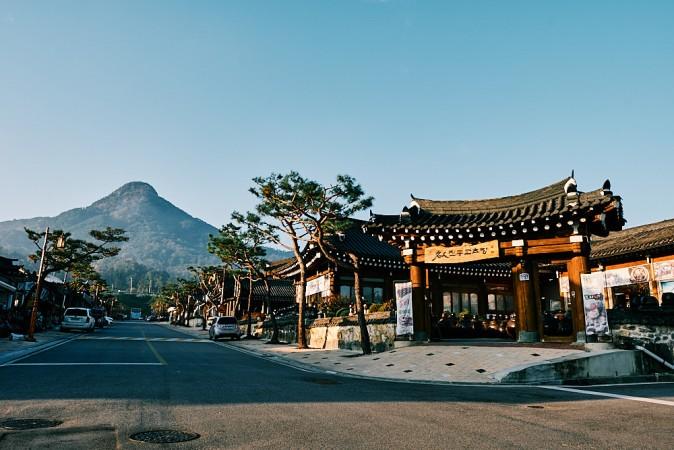
Gochujang village - © gather
Essential Travel Information
Getting to Sunchang
By Train
Train to Jeongeup: Take a train from Seoul Station to Jeongeup Station, which takes around 3 hours. From there, take a bus to Sunchang, which takes about 30 minutes.
By Bus
Direct Bus from Seoul: From Seoul Central City Terminal, there are several daily buses to Sunchang, with a travel time of around 4 hours. The cost ranges from W33,000 to W43,000, depending on the type of bus.
Getting Around Sunchang
Public Transit
Local Buses: Once in Sunchang, local buses can be used to travel within the county and to nearby attractions. The bus system connects various parts of the county, making it accessible for travelers.
Taxis
Taxis are available for hire in Sunchang and can be a convenient option for reaching specific destinations, especially if traveling with luggage or in a group.
Car Rentals
For more flexibility, renting a car is an option. Rental services are available in nearby cities like Jeonju, allowing visitors to explore Sunchang and its surroundings at their own pace.
Walking and Cycling
Given Sunchang's scenic landscapes and compact size, walking and cycling are enjoyable ways to explore the area, especially for visiting local attractions and experiencing the natural beauty.
ATM and Banking Services
Sunchang has several ATMs and banking facilities that cater to both locals and tourists. Major banks like Woori Bank, Shinhan Bank, and KEB Hana Bank operate ATMs throughout the county, many of which offer English language options for ease of use. Visitors can withdraw cash in Korean Won (KRW) using international debit or credit cards, but it's advisable to use bank-operated ATMs to minimize fees. Most ATMs are located in convenient areas, including near shopping districts and transportation hubs, making it easy to access cash when needed.
Accommodation Choices
Sunchang offers a variety of accommodation options to suit different preferences and budgets. Visitors can choose from traditional hanok stays, which provide a unique cultural experience in a traditional Korean house, to modern hotels and guesthouses that offer comfortable amenities. Additionally, many accommodations are conveniently located near local attractions, making it easy for travelers to explore the county's rich culinary and cultural heritage.
Articles for you

Experience Aboard The RV Indochine II - A Mekong Cruise With Tweet World Travel
The RV Indochine II is a luxury river cruise ship, offering an unforgettable journey through many attractions along the Mekong River. Built in 2017, this upscale vessel combines colonial elegance with modern conveniences to create a comfortable yet stylish environment for its crew and passengers. The ship’s intimate size makes it ideal for those seeking a more personal cruising experience while exploring Vietnam and Cambodia rich culture, scenery, and heritage. Whether you're gazing at the landscape from your private balcony or enjoying authentic local cuisine, RV Indochine II promises an exotic adventure like no other.

Witness Stilt Fishing In Sri Lanka: An Eco-Tourism Experience
Sri Lanka, renowned for its stunning beaches and rich cultural heritage, harbors a unique tradition that has captivated travelers for centuries: stilt fishing. This ancient practice, passed down through generations of coastal communities, blends artistry with necessity, offering a glimpse into a way of life intimately connected to the island's coastal rhythms. Stilt fishing in Sri Lanka isn't merely a means to catch fish; it's a cultural emblem, embodying the resilience and ingenuity of Sri Lanka's fishing communities.

Make Your Trip Stress-Free With The Tweet Trip App
Embark on your next adventure with confidence by downloading the Tweet Trip App, available for both iOS and Android. This essential travel companion allows you to view your detailed itinerary, stay connected with your tour guide and fellow travelers, receive real-time updates, and provide feedback effortlessly. With features like in-app messaging, emergency assistance, and location sharing, the Tweet Trip App ensures you travel smarter, stay connected, and enjoy a seamless, worry-free journey. Get started today and make the most of your travel experience with Tweet World Travel.

Pedal Through Paradise: Unveiling Cambodia's Hidden Gems on Two Wheels
The gentle whir of bicycle wheels mingles with the distant chants of monks as you glide past emerald rice paddies stretching to the horizon. This is Cambodia - a sensory explosion waiting to be experienced on two wheels. At Tweet Tours, we believe there's no better way to immerse yourself in the Kingdom of Wonder than by bicycle.
Cambodia isn't just a destination; it's a living, breathing tapestry of ancient wonders, natural beauty, and vibrant culture. Our carefully crafted cycling tours take you beyond the typical tourist haunts, offering a unique perspective on this captivating country. Ready to clip in and discover the magic of Cambodia? Let's ride!

Trekking in the Himalayas: A Journey Through Nepal's Majestic Peaks
The Himalayas rise from the earth like colossal guardians, their snow-capped peaks piercing the sky in a display of nature's raw power and beauty. Nepal, nestled at the heart of this mountain range, serves as the gateway to some of the most breathtaking trekking experiences on the planet. Here, the air is crisp and thin, filled with the promise of adventure and the whispers of ancient tales.
With Tweet Tours, as you set foot on these hallowed trails, you're not just a traveler - you're a modern-day explorer, following in the footsteps of legendary mountaineers and age-old traders. Each step takes you further into a world where nature reigns supreme and human resilience is tested against the backdrop of some of the world's highest peaks.
From the moment your boots touch the ground in Kathmandu, you'll feel the pull of the mountains. The bustling streets of the capital, with their sensory overload of sights, sounds, and smells, soon give way to serene mountain paths where the only soundtrack is the crunch of gravel underfoot and the distant tinkling of yak bells.

Exploring Mui Ne's Wonders: Unique Attractions & Local Dishes
Nestled along the southeastern coast of Vietnam, Mui Ne emerges as a captivating gem, blending natural wonders with cultural richness. Renowned for its stunning landscapes and unique attractions, Mui Ne beckons travelers seeking both relaxation and adventure in equal measure. Mui Ne's renowned beach dunes, bustling fishing towns, and excellent local food await exploration at every turn.
The allure of Mui Ne lies not only in its pristine beaches and crystal-clear waters but also in its diverse range of activities catering to every traveler's whims. Whether you're drawn to thrilling water sports like kitesurfing and windsurfing on its dynamic shores or seeking tranquility amidst the picturesque Fairy Stream, Mui Ne promises an unforgettable journey filled with discovery.
